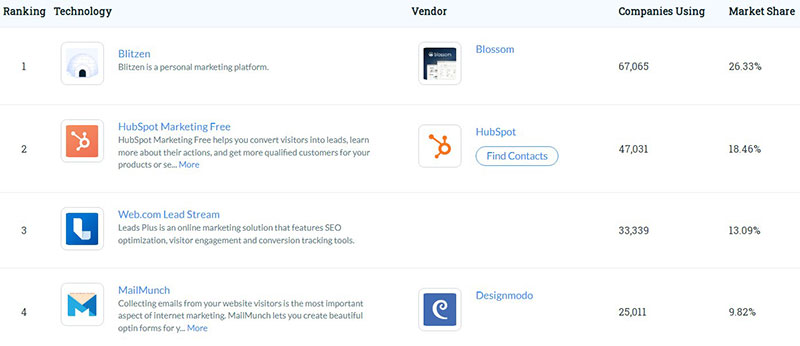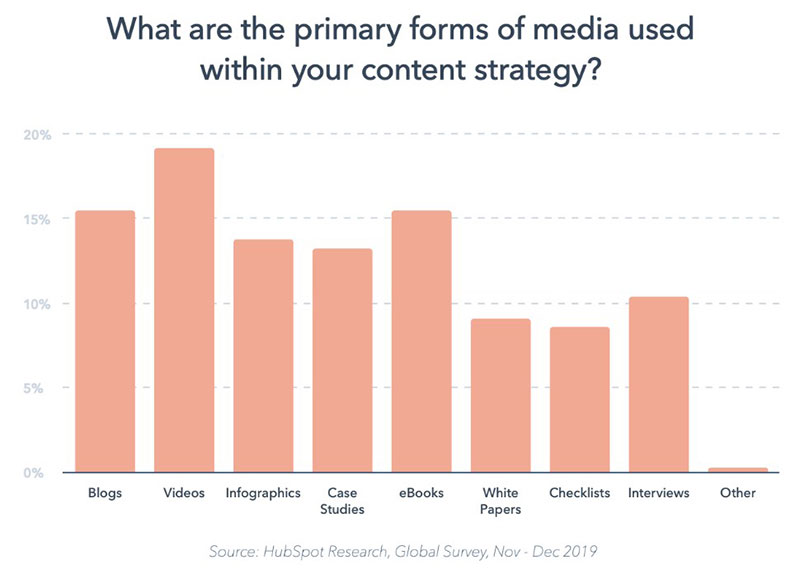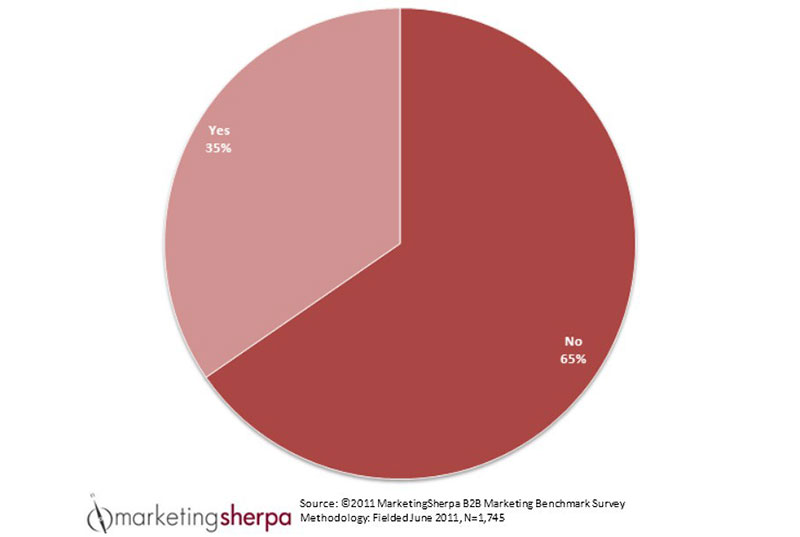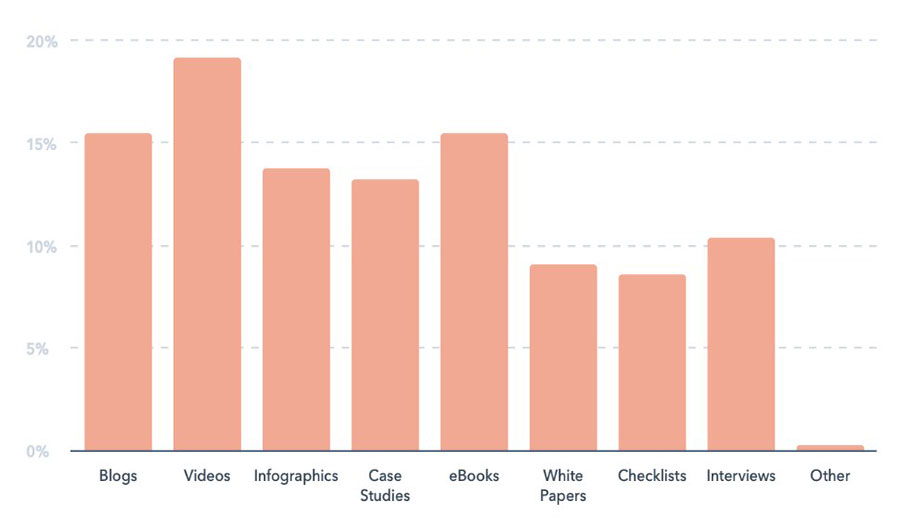Generating leads is critical for every business. Businesses can't achieve the ultimate conversion goal without numerous leads. Other factors, such as lead quality, are also crucial.
Lead generation happens through different channels, and these channels change as technology develops. For example, marketing automation and artificial intelligence are evolving lead generation strategies.
The consumer market is also taking off in a new direction. Your prospective clients access new gadgets and technology every year. Thus changing the way people perceive ads. So adapting to these advances is vital for any business that depends on generating leads.
This article presents lead generation statistics. These will help you stay up-to-date about the new lead generation tools available. Knowing these trends will help you make intelligent decisions and not fall behind.
Lead generation statistics
This section shows general lead generation statistics.
The lead generation industry is expected to reach $295.1 billion with a CAGR of 17%by 2027. (Business Wire)
Though many sectors have slowed down due to COVID-19, the lead generation industry is not one of them. Statistics show an estimated increase of 295.1 billion by 2017, and other industries show similar results. Content marketing, for example, is estimated to reach$829.6 billion by the same year.
The lead generation sector spans 300,653 companies worldwide (Datanyze)

The lead generation market is quite large, comprising over 300,000 companies. Only of these offer lead generation technology. Some examples are Sumo, Marketing Free, Blitzen, MailMunch, and HubSpot.
65% of companies acknowledge that generating traffic and leads is the most complicated part of their marketing strategy. (HubSpot)

Lead generation statistics show that these two factors are still the most challenging. Moreover, the touchpoints between customers and brands have increased. While these offer new opportunities to narrow down leads, they present challenges in other areas. The market now requires innovative technology and new ways to analyze and collect data.
53% of marketers spend half of their budget on lead generation. (Source)

This factor is so important that companies are willing to pay more. Many marketers allocate over half of their budgets to generate leads. In fact, advertisers spending less than half only account for 34%.
Less than one-fifth of advertisers think that outbound lead generation results in high-quality leads. (Hubspot)
Lead generation statistics show that outbound marketing is coming to an end, and only 18% of the industry thinks qualified leads result from this approach. That means that cold-calling, banner ads, and TV/radio marketing will soon be a thing of the past.
Inbound leads cost less than outbound leads by 61%. (Hubspot)
Although businesses still use both strategies, inbound leads have proven more cost-effective. This approach includes content marketing, email marketing campaigns, and social media.
80% of paying customers value the experience they had with the company as much as the quality of its products. (Salesforce)
User experience is becoming an ever more determining factor. First, reviews of a company's reputation are more accessible than before, and just a couple of bad reviews can seriously affect your business's lead generation statistics.
Providing a pleasant experience for your website's visitors is critical. This practice decreases your bounce rate and increases your leads. Additionally, customer service needs special attention. If your clients had a satisfying experience with your staff, they are more likely to return.
Lead generation statistics related to conversions
We surveyed B2B marketers to understand what conversion points capture leads.
96% of visitors that come to a website are not ready to buy. (Marketo)
Most potential customers who visit a website for the first time are not prepared to purchase. This reality applies to both B2C and B2B approaches. However, visitors might be willing to leave their contact information if they find something interesting.
When someone lands on your site, you need to give that person a reason to return. Marketers must find a way to lure customers into the sales funnel. Also called lead nurturing,it requires an effective strategy.
84% of advertisers use forms to generate leads. (Ruler Analytics)
There are many ways to approach lead generation. B2C and B2B marketers use Google Ads, content marketing, and other lead generation strategies.
Yet, a large percentage chooses to capture leads through form submissions. These include contact, gated content, or demo try-out forms.
76% of the people that use the"near me" search function visit the place within a day. (Google)

Although online businesses are becoming popular, let's not forget about brick-and-mortar stores. Some people still prefer to shop face-to-face, and this is worth considering.
Google My Business is a powerful tool to attract customers to your physical store. GMB is a free service that allows small and mid-sized business to manage their online presence. They can draw clients to their front door and traffic to their websites, social media profiles, etc.
Social media statistics
You can use social media profiles for various purposes, and they are an excellent way to build brand awareness. Social media is also a powerful lead generation tool.
LinkedIn dominates lead generation. (LinkedIn)

B2B lead generation statistics show interesting results for social media channels. Studies show that 80% of leads come from LinkedIn, making this platform one of the most significant professional networks worldwide, with more than 675 million members.
This database works well for professionals globally in every industry, and it's effective for lead generation in all sectors,especially for B2B marketers.
Each month one billion people use Instagram, and half of them use it every day. (Hootsuite)
While LinkedIn is the perfect source for B2B lead generation, Instagram is excellent for the B2C approach.
Instagram is in third place in social media usage after Facebook and Twitter. Additionally, its community reaches one billion people a month. That creates an excellent environment for lead generation, but the competition is fierce.
Businesses need to have a solid marketing strategy to optimize lead generation and conversion.
Content Marketing
Content marketing is also becoming very popular. This niche is growing and is expected to pass 800 billion by 2027. Sharing content that people find useful is the basis for this strategy.You can keep your audience engaged with fascinating articles, blog entries, and social media posts.
This approach foments lead generation maintains a database of loyal customers.
93% of companies with a B2B approach attest that content marketing works better than other lead generation strategies. (Marketo)

Therefore, many advertisers choose this approach over other marketing strategies. These lead generation statistics come from B2B companies that generate leads at events.
While this option may bring more benefits than traditional methods, it also requires caution. Your success will depend on your content's quality and frequency.
Content marketing generates three times as many leads as outbound approaches at less than half the cost. (Demand Metric)

Content marketing generates more leads than other options because it engages people, making them feel like a part of your company rather than a target. Also, content marketing is about providing value. And offering your audience valuable information will encourage them to return.
You can explain how to do something, solve a problem, or give them something beneficial. Informative articles, email marketing, a free download, or access to an event all work to accomplish this.
Content marketing costs less than half of other options and generates three times more leads. Marketers now can free up time to generate more valuable content, thus creating a healthy cycle. They will also free up funds to pay professional writers, editors, etc.
80% of B2B businesses use content marketing for generating leads. (Content Marketing Institute)
Considering its advantages, it's not surprising that most businesses use content marketing as a lead generation strategy.
Marketers who prioritize blogging have 13 times more chances to see positive returns. (Hubspot)

Blogging has been a part of marketing efforts for years. And lead generation statistics show this is unlikely to change any time soon.
Content marketers that focus on their blogs see increased revenue and leads. So, take time to grow and develop your blog to see long-term benefits.
The right blog headline can attract 500% more traffic to your website. (Wired)
What does a headline have to do with lead generation? The answer is simple: it creates traffic. An attractive headline will draw people to your website, whether through a Google search, paid advertising, or social media.
You will boost your site's ranking on search engines by generating traffic. Then more people will find and enter your sales funnel.
A blog headline must be attractive, clever, and accurately convey the article's topic. Your headline may be your only chance to create a good first impression. Make sure you don't waste this opportunity.
After creating an attention-getting headline, you can place call-to-actions within the text on the blog page. Also, adding a pop-up window as the user is about to leave the page can be a lead-catcher.
B2C businesses that post over 11 blog entries a month generate four times more leads than those that post 4 or 5. (HubSpot)
This lead generation statistic points to the advantage of prioritizing content marketing. Companies that blog more often typically get four times the leads.
Still, this strategy may backfire. Keep in mind that Google will assess your content. If Google deems it valuable enough, it will appear higher on organic searches.
But what does Google consider to be good content? It prioritizes uniqueness and good quality. Be careful not to overdo your strategy: Always prioritize quality over quantity.
It's also worth noting that search engines work with people in mind. If people like your posts, Google knows it. They stay longer on the page, leave comments, share, etc.
The bottom line is: always write for people, especially your target audience. Write meaningful pieces that bring them value and relates them to your product.
64% of customers are more likely to buy after seeing a video. 90% of them acknowledge that watching a video helps them make a buying decision. (Forbes)
While online shopping is the current trend, it has its drawbacks. It's harder to gain a customer's trust online than with your brick-and-mortar store. Many people still need to see what they are going to buy, and product descriptions don't always help.
By watching a video, customers better understand the product's dimensions, materials, and characteristics.
Email marketing statistics
Email marketing continues to be one of marketers' favorite lead generation strategies. And that is because it helps nurture leads and turn them into recurring customers. Here are some fascinating lead nurturing statistics.
Email marketing drives more ROI than any other lead generation strategy. (Campaign Monitor)
Statistics show that email marketing can bring up to a 4,400% return. For every dollar you spend on this strategy, you can get $42 back. No other lead generation tool generates this ROI. Yet, you must carefully design and implement it to be effective.
The best results come from emails sent at 1 p.m. (Optinmonster)
Extensive research revealed this statistic. In most cases, lead nurturing emails have better results at 1 p.m. However, it depends on your audience. While it is generally true, marketers must conduct tests to figure out the right time for them.
B2B lead generation statistics
68% of B2B businesses use landing pages to capture leads. (Marketo)
Unlike other companies, B2B businesses have a higher landing page conversion rate. The information they can gather from leads results in success. They can collect what they need to create an efficient lead nurturing channel.
If you own such a business, pay special attention to this. Strategic landing pages can increase your lead generation rate.
Events are a great source for B2B lead generation. (Marketing Charts)

After email campaigns, event marketing is the second favorite method for lead generation. That is why many companies host events.
The average cost of B2B leads varies according to the industry, ranging between $31 and $60 (Marketing Insider Group)
Average lead costs vary significantly across industries. Research shows that a B2B lead for the tech industry costs $31, while other sectors face higher prices—for example, a healthcare lead costs about$60.
Lead nurturing statistics
Education is the basis of this process. So marketers need to teach their leads about the products, including the benefits, advantages, and usability.
Over half the leads are not ready to buy. (Marketing Sherpa)

Lead generation statistics show that two-thirds of leads are not ready for conversion. That is where lead nurturing becomes crucial. The marketing team needs to engage with prospective customers to convert leads successfully. And this strategy includes educating them, sending information, and keeping them interested. Thus, you'll succeed in channeling your leads through the sales funnel.
Over half the marketers say that engagement is their priority. (Ascend2)
Capturing leads requires an excellent strategy, but nurturing them requires a different focus. The former usually requires technical work like a good design, optimal loading speed, or placing the right submission form. On the other hand, lead nurturing is a long-term process. And it usually takes soft skills, like conveying the right message or offering valuable content. 54% of email marketers have made increasing engagement their priority.
Nurtured leads produce 50% more sales at 33% lower costs. (Marketo)
Lead generation is only the first step. What makes a business profitable is lead nurturing. This process does take more time, but it generates 50% more conversions and costs less than other processes. Lead generation statistics show this is a smart marketing strategy.
Nurtured leads spend 47% more than regular ones. (Annuitas)
This approach will not only get you more sales but also larger purchases. Nurtured leads tend to spend almost 50% more than non-nurtured ones.
51% of marketers say that segmentation is the best approach to lead nurturing. (Ascend2)

Over half the email marketers use segmentation to nurture leads. That allows you to get to know your audience and offer them client-oriented products.
Marketing automation statistics
Now that we understand the importance of lead nurturing, we need to consider other things. Manually handling a large number of leads is an impossible task. But marketing automation software can take care of the task.
Email automation is one of the three main tactics to improve performance. (HubSpot)
Marketers use automation software to optimize processes and get better results.
80% of marketers believe email automation generates more leads and conversions. (APSIS)
Lead generation statistics show that marketing automation generates 452% more leads than other tactics. This approach also increases conversions. 77% of marketers using automation software close more leads than those who don't.
23% of those using automated methods also automate their content delivery. (HubSpot, 2020) (Hubspot)
Many email marketers automatically deliver their content for better performance.
Most top-performing businesses have been using marketing automation for three years or more. (Pardot)
Statistics show that automation leads to better performance.
Conversion statistics
Around 63% of the people who approach your business for information won't purchase for the next three months. (Marketing Donut)
A long-term lead conversion approach is the most effective one. So don't try too hard to convert new leads as it may result in wasted efforts and resources. Statistics reveal interesting results on this subject. More than half the people coming to your company looking for information won't purchase for at least three months.
Only 20% of leads turn into sales-ready prospects. (Next Leap Strategy)
That means that only 20 out of 100 visitors that visit your site are interested in buying on the first visit. All industries show high cart abandonment rates (70%). You can design an effective strategy by considering this fact.
A conclusion on these lead generation statistics
Lead generation is not hard science, and it requires a large amount of research, dedication, and creativity. These lead generation statistics show a general picture of what works best. However, this industry is people-based, and you can't always predict people's behavior.
Only you know your audience's interests, problems, habits, timing, purchasing power, etc. Testing different approaches will help you create the best strategy. Thus, you can choose the tools that work best for your business.
If you enjoyed reading this article on lead generation statistics, you should check out this one about the email marketing funnel.
We also wrote about a few related subjects like cold email software, product evangelists, social media lead generation, how to write a formal email, sales automation software, sales funnel examples, digital marketing campaigns, email marketing courses, email marketing automation, the best sales apps, best CRM for Gmail, useful elevator pitch examples, sales pipeline stages, email tracking software, and sales automation tools.


